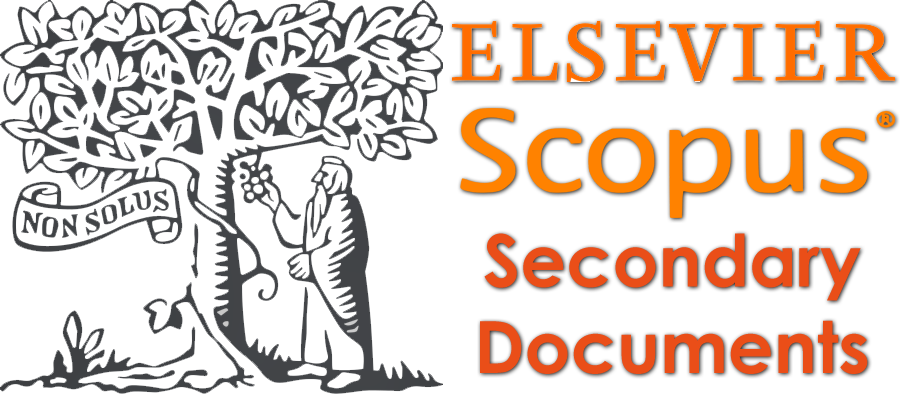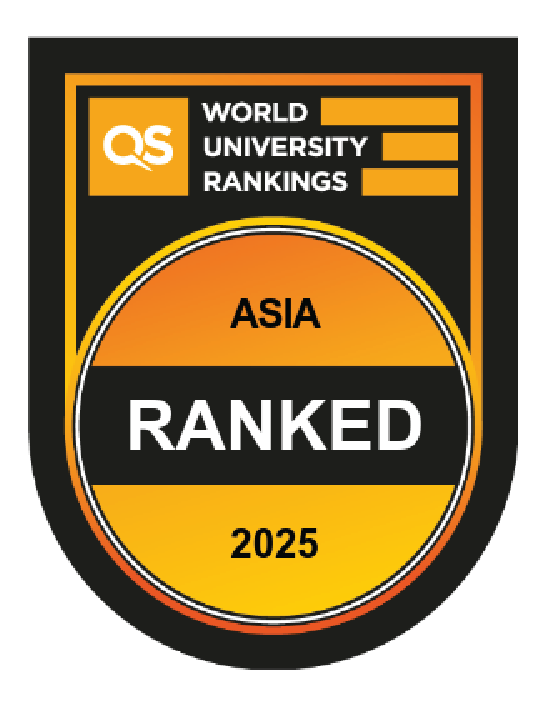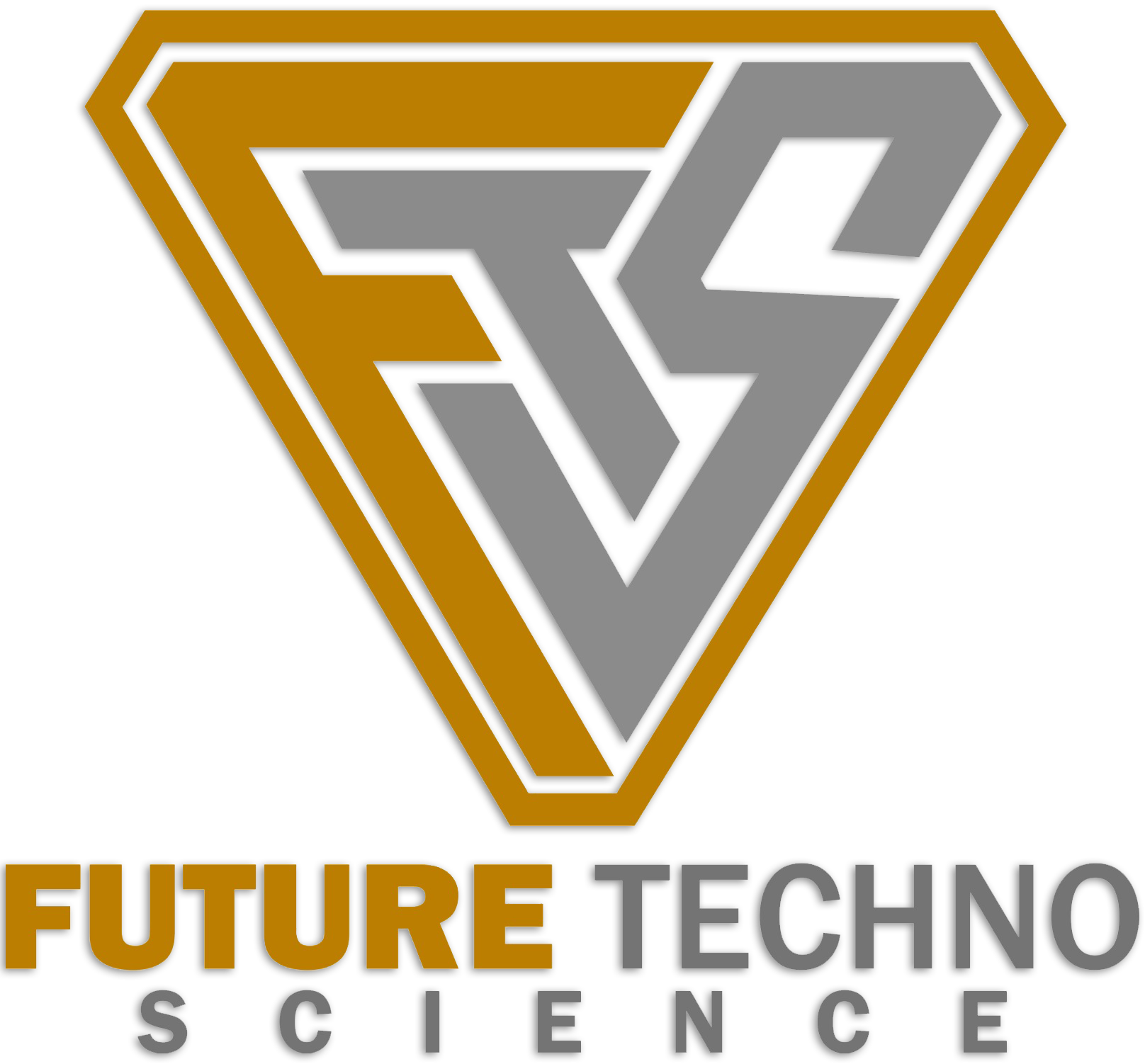A Review of Generative Models for 3D Vehicle Wheel Generation and Synthesis
DOI:
https://doi.org/10.62411/jcta.10125Keywords:
3D Vehicle Wheels, Artificial Intelligence, Computer-Aided Design (CAD), Computer-Aided Engi-neering (CAE), Deep Learning, Generative ModelsAbstract
Integrating deep learning methodologies is pivotal in shaping the continuous evolution of computer-aided design (CAD) and computer-aided engineering (CAE) systems. This review explores the integration of deep learning in CAD and CAE, particularly focusing on generative models for simulating 3D vehicle wheels. It highlights the challenges of traditional CAD/CAE, such as manual design and simulation limitations, and proposes deep learning, especially generative models, as a solution. The study aims to automate and enhance 3D vehicle wheel design, improve CAE simulations, predict mechanical characteristics, and optimize performance metrics. It employs deep learning architectures like variational autoencoders (VAEs), convolutional neural networks (CNNs), and generative adversarial networks (GANs) to learn from diverse 3D wheel designs and generate optimized solutions. The anticipated outcomes include more efficient design processes, improved simulation accuracy, and adaptable design solutions, facilitating the integration of deep learning models into existing CAD/CAE systems. This integration is expected to transform design and engineering practices by offering insights into the potential of these technologies.References
A. Vasantharaj, N. Nandhagopal, S. A. Karuppusamy, and K. Subramaniam, “An in-tire-pressure monitoring SoC using FBAR resonator-based ZigBee transceiver and deep learning models,” Microprocess. Microsyst., vol. 95, no. May, p. 104709, Nov. 2022, doi: 10.1016/j.micpro.2022.104709.
R. Wu, C. Xiao, and C. Zheng, “DeepCAD: A Deep Generative Network for Computer-Aided Design Models,” in 2021 IEEE/CVF International Conference on Computer Vision (ICCV), Oct. 2021, pp. 6752–6762. doi: 10.1109/ICCV48922.2021.00670.
L. Regenwetter, A. H. Nobari, and F. Ahmed, “Deep Generative Models in Engineering Design: A Review,” J. Mech. Des., vol. 144, no. 7, Jul. 2022, doi: 10.1115/1.4053859.
G. G. Wang and S. Shan, “Review of Metamodeling Techniques in Support of Engineering Design Optimization,” in Volume 1: 32nd Design Automation Conference, Parts A and B, Jan. 2006, vol. 2006, pp. 415–426. doi: 10.1115/DETC2006-99412.
H. Cheong, W. Li, and L. H. Shu, “Natural Language Problem Definition for Computer-Aided Mechanical Design,” ACM CHI 2014 - DSLI Work., 2014.
V. Singh and N. Gu, “Towards an integrated generative design framework,” Des. Stud., vol. 33, no. 2, pp. 185–207, Mar. 2012, doi: 10.1016/j.destud.2011.06.001.
L. Barbieri and M. Muzzupappa, “Performance-Driven Engineering Design Approaches Based on Generative Design and Topology Optimization Tools: A Comparative Study,” Appl. Sci., vol. 12, no. 4, p. 2106, Feb. 2022, doi: 10.3390/app12042106.
K. Kar?iauskas and J. Peters, “Refinable bi-quartics for design and analysis,” Comput. Des., vol. 102, pp. 204–214, Sep. 2018, doi: 10.1016/j.cad.2018.05.001.
S. Krish, “A practical generative design method,” Comput. Des., vol. 43, no. 1, pp. 88–100, Jan. 2011, doi: 10.1016/j.cad.2010.09.009.
M. M. Nisar, S. Zia, M. Fenoon, and O. Alquabeh, “Generative Design of a Mechanical Pedal,” Int. J. Eng. Manag. Sci., vol. 6, no. 1, pp. 48–58, 2021, doi: 10.21791/ijems.2021.1.5.
N. A. Kallioras and N. D. Lagaros, “DzAI?: Deep learning based generative design,” Procedia Manuf., vol. 44, pp. 591–598, Jan. 2020, doi: 10.1016/j.promfg.2020.02.251.
A. Burnap, Y. Liu, Y. Pan, H. Lee, R. Gonzalez, and P. Y. Papalambros, “Estimating and Exploring the Product Form Design Space Using Deep Generative Models,” in Volume 2A: 42nd Design Automation Conference, Aug. 2016, vol. 2A-2016, pp. 1–13. doi: 10.1115/DETC2016-60091.
A. Hadj-Attou, Y. Kabir, and F. Ykhlef, “Hybrid deep learning models for road surface condition monitoring,” Measurement, vol. 220, no. December 2022, p. 113267, Oct. 2023, doi: 10.1016/j.measurement.2023.113267.
J. Smeets, K. Öztürk, and R. Liebich, “Digital twins for automotive development: Two wheelers application,” Adv. Eng. Informatics, vol. 56, no. December 2022, p. 101982, Apr. 2023, doi: 10.1016/j.aei.2023.101982.
D. Shin et al., “How to Trade off Aesthetics and Performance in Generative Design ?,” in World Congress on Advances in Structural Engineering and Mechanics, 2021, pp. 1–5. [Online]. Available: http://www.i-asem.org/publication_conf/asem21/1.SM/2. T4B/3. SM2144_7129.pdf
J. Hofer, E. Wilhelm, and W. Schenler, “Comparing the Mass, Energy, and Cost Effects of Lightweighting in Conventional and Electric Passenger Vehicles,” J. Sustain. Dev. Energy, Water Environ. Syst., vol. 2, no. 3, pp. 284–295, Sep. 2014, doi: 10.13044/j.sdewes.2014.02.0023.
B. Regassa Hunde and A. Debebe Woldeyohannes, “Future prospects of computer-aided design (CAD) – A review from the perspective of artificial intelligence (AI), extended reality, and 3D printing,” Results Eng., vol. 14, no. June, p. 100478, Jun. 2022, doi: 10.1016/j.rineng.2022.100478.
D. Nahata and K. Othman, “Exploring the challenges and opportunities of image processing and sensor fusion in autonomous vehicles : A comprehensive review,” vol. 7, no. September, pp. 271–321, 2023, doi: 10.3934/electreng.2023016.
G. D. Goh, S. L. Sing, and W. Y. Yeong, “A review on machine learning in 3D printing: applications, potential, and challenges,” Artif. Intell. Rev., vol. 54, no. 1, pp. 63–94, 2021, doi: 10.1007/s10462-020-09876-9.
T. Akande and O. O. Alabi, “A Deep Learning-Based CAE Approach For Simulating 3D Vehicle Wheels Under Real-World Conditions,” Artif. Intell. Appl., no. January, 2024, doi: 10.47852/bonview42021882.
J. D. Cunningham, T. W. Simpson, and C. S. Tucker, “An Investigation of Surrogate Models for Efficient Performance-Based Decoding of 3D Point Clouds,” J. Mech. Des., vol. 141, no. 12, pp. 1–11, Dec. 2019, doi: 10.1115/1.4044597.
S. Dai, M. Kleiss, M. Alani, and N. Pebryani, “Reinforcement Learning-Based Generative Design Methodology for Kinetic Facade,” in Proceedings of the 27th Conference on Computer Aided Architectural Design Research in Asia (CAADRIA) [Volume 1], 2022, vol. 1, pp. 151–160. doi: 10.52842/conf.caadria.2022.1.151.
S. Abrishami, J. S. Goulding, F. P. Rahimian, and A. Ganah, “Integration of BIM and generative design to exploit AEC conceptual design innovation,” J. Inf. Technol. Constr., vol. 19, no. July 2015, pp. 350–359, 2014.
G. P. Gujarathi and Y.-S. Ma, “Generative CAD and CAE integration using common data model,” in 2010 IEEE International Conference on Automation Science and Engineering, Aug. 2010, no. August 2010, pp. 586–591. doi: 10.1109/COASE.2010.5584195.
S. Yoo, S. Lee, S. Kim, K. H. Hwang, J. H. Park, and N. Kang, “Integrating deep learning into CAD/CAE system: generative design and evaluation of 3D conceptual wheel,” Struct. Multidiscip. Optim., vol. 64, no. 4, pp. 2725–2747, Oct. 2021, doi: 10.1007/s00158-021-02953-9.
M. Lee, “Recent Advances in Generative Adversarial Networks for Gene Expression Data: A Comprehensive Review,” Mathematics, vol. 11, no. 14, 2023, doi: 10.3390/math11143055.
W.-L. Mao et al., “Integration of Deep Learning Network and Robot Arm System for Rim Defect Inspection Application,” Sensors, vol. 22, no. 10, p. 3927, May 2022, doi: 10.3390/s22103927.
S. Jang, S. Yoo, and N. Kang, “Generative Design by Reinforcement Learning: Enhancing the Diversity of Topology Optimization Designs,” CAD Comput. Aided Des., vol. 146, 2022, doi: 10.1016/j.cad.2022.103225.
I. Ntintakis and G. E. Stavroulakis, “Progress and recent trends in generative design,” MATEC Web Conf., vol. 318, p. 01006, Aug. 2020, doi: 10.1051/matecconf/202031801006.
M. Arjomandi Rad, K. Salomonsson, M. Cenanovic, H. Balague, D. Raudberget, and R. Stolt, “Correlation-based feature extraction from computer-aided design, case study on curtain airbags design,” Comput. Ind., vol. 138, p. 103634, Jun. 2022, doi: 10.1016/j.compind.2022.103634.
S. Oh, Y. Jung, S. Kim, I. Lee, and N. Kang, “Deep Generative Design: Integration of Topology Optimization and Generative Models,” J. Mech. Des., vol. 141, no. 11, Nov. 2019, doi: 10.1115/1.4044229.
Y. Gao et al., “????????????????????? ?????????????????,” Aleph, vol. 87, no. 1,2, pp. 149–200, 2023.
S. Kim, M. Jwa, S. Lee, S. Park, and N. Kang, “Deep learning-based inverse design for engineering systems: multidisciplinary design optimization of automotive brakes,” Struct. Multidiscip. Optim., vol. 65, no. 11, p. 323, Nov. 2022, doi: 10.1007/s00158-022-03386-8.
H. Sun and L. Ma, “Generative Design by Using Exploration Approaches of Reinforcement Learning in Density-Based Structural Topology Optimization,” Designs, vol. 4, no. 2, p. 10, May 2020, doi: 10.3390/designs4020010.
F. Del Pero, L. Berzi, A. Antonacci, and M. Delogu, “Automotive lightweight design: Simulation modeling of mass-related consumption for electric vehicles,” Machines, vol. 8, no. 3, 2020, doi: 10.3390/machines8030051.
M. Imal and M. Ermurat, “Design of Lightweight Electric Vehicle and Application for Efficiency Challenge Marathon Competition,” Int. J. Eng. Sci. Technol., vol. 6, no. 6, pp. 19–27, Nov. 2022, doi: 10.29121/ijoest.v6.i6.2022.419.
Z. Pan, X. Wang, R. Teng, and S. Gao, “A Synchronous CAD/CAE Modeling Method and Applications in Parametric Parts Library,” Open Mech. Eng. J., vol. 9, no. 1, pp. 189–195, Apr. 2015, doi: 10.2174/1874155X01509010189.
K. Shea, R. Aish, and M. Gourtovaia, “Towards Integrated Performance-Based Generative Design Tools,” in Proceedings of the International Conference on Education and Research in Computer Aided Architectural Design in Europe, 2003, pp. 553–560. doi: 10.52842/conf.ecaade.2003.553.
X. Liu et al., “Deep transfer learning for intelligent vehicle perception: A survey,” Green Energy Intell. Transp., vol. 2, no. 5, p. 100125, Oct. 2023, doi: 10.1016/j.geits.2023.100125.
F. Boussuge, C. G. Armstrong, C. M. Tierney, and T. T. Robinson, “Application of tensor factorisation for CAE model preparation from CAD assembly models,” Comput. Des., vol. 152, p. 103372, Nov. 2022, doi: 10.1016/j.cad.2022.103372.
H. Liu, F. Wang, L. Qiu, and C. Chi, “Acoustic simulation using singular boundary method based on loop subdivision surfaces: A seamless integration of CAD and CAE,” Eng. Anal. Bound. Elem., vol. 158, no. July 2023, pp. 97–106, Jan. 2024, doi: 10.1016/j.enganabound.2023.10.022.
C. Li, P. Wei, X. Luo, Z. Jiang, and D. Wang, “An unified CAD/CAE/VR tool for ship structure design and evaluation based on multi-domain feature mapping,” Ocean Eng., vol. 280, no. February, p. 114888, Jul. 2023, doi: 10.1016/j.oceaneng.2023.114888.
M. T. H. Khan and S. Rezwana, “A review of CAD to CAE integration with a hierarchical data format (HDF)-based solution,” J. King Saud Univ. - Eng. Sci., vol. 33, no. 4, pp. 248–258, May 2021, doi: 10.1016/j.jksues.2020.04.009.
L. Guo and S. Wu, “FPGA Implementation of a Real-Time Edge Detection System Based on an Improved Canny Algorithm,” Appl. Sci., vol. 13, no. 2, p. 870, Jan. 2023, doi: 10.3390/app13020870.
E. Toptas, “Innovative approach to the design of mechanical parts,” J. Mechatronics Artif. Intell. Eng., vol. 1, no. 1, pp. 14–20, Jun. 2020, doi: 10.21595/jmai.2020.21473.
K. D. D. Willis et al., “JoinABLe: Learning Bottom-up Assembly of Parametric CAD Joints,” in 2022 IEEE/CVF Conference on Computer Vision and Pattern Recognition (CVPR), Jun. 2022, vol. 2022-June, pp. 15828–15839. doi: 10.1109/CVPR52688.2022.01539.
F. Ahmed, K. Deb, and B. Bhattacharya, “Structural topology optimization using multi-objective genetic algorithm with constructive solid geometry representation,” Appl. Soft Comput., vol. 39, pp. 240–250, Feb. 2016, doi: 10.1016/j.asoc.2015.10.063.
L. Li, Y. Ma, and C. F. Lange, “Association of Design and Simulation Intent in CAD/CFD Integration,” Procedia CIRP, vol. 56, no. November, pp. 1–6, 2016, doi: 10.1016/j.procir.2016.10.006.
Z. Nie, H. Jiang, and L. B. Kara, “Stress Field Prediction in Cantilevered Structures Using Convolutional Neural Networks,” J. Comput. Inf. Sci. Eng., vol. 20, no. 1, pp. 1–16, Feb. 2020, doi: 10.1115/1.4044097.
M. Pegg, “The Mentoring approach,” in International Conference on Intelligent Robots and Systems (IROS), 2015, pp. 922–928.
N. Umetani, “Exploring generative 3D shapes using autoencoder networks,” in SIGGRAPH Asia 2017 Technical Briefs, Nov. 2017, pp. 1–4. doi: 10.1145/3145749.3145758.
G. Williams, N. A. Meisel, T. W. Simpson, and C. McComb, “Design Repository Effectiveness for 3D Convolutional Neural Networks: Application to Additive Manufacturing,” J. Mech. Des., vol. 141, no. 11, pp. 1–12, Nov. 2019, doi: 10.1115/1.4044199.
M. Duquesnoy, C. Liu, D. Z. Dominguez, V. Kumar, E. Ayerbe, and A. A. Franco, “Machine Learning-Assisted Multi-Objective Optimization of Battery Manufacturing from Synthetic Data Generated by Physics-Based Simulations,” Transp. Res. Part D Transp. Environ., vol. 119, no. February, p. 103721, May 2022, doi: 10.1016/j.trd.2023.103721.
H. Salman et al., “Learning to Sequence Robot Behaviors for Visual Navigation,” vol. 2733, no. March, pp. 2709–2733, Mar. 2018, [Online]. Available: http://arxiv.org/abs/1803.01446
Z. Wang, J. Quintanal, and R. Corral, “Accelerating advancing layer viscous mesh generation for 3D complex configurations,” Comput. Des., vol. 112, pp. 35–46, Jul. 2019, doi: 10.1016/j.cad.2018.11.002.
T. Rios, B. Van Stein, T. Back, B. Sendhoff, and S. Menzel, “Point2FFD: Learning Shape Representations of Simulation-Ready 3D Models for Engineering Design Optimization,” in 2021 International Conference on 3D Vision (3DV), Dec. 2021, pp. 1024–1033. doi: 10.1109/3DV53792.2021.00110.
D. Mallis et al., “SHARP Challenge 2023: Solving CAD History and pArameters Recovery from Point clouds and 3D scans. Overview, Datasets, Metrics, and Baselines,” Aug. 2023, [Online]. Available: http://arxiv.org/abs/2308.15966
J. D. Jansen, “Adjoint-based optimization of multi-phase flow through porous media – A review,” Comput. Fluids, vol. 46, no. 1, pp. 40–51, Jul. 2011, doi: 10.1016/j.compfluid.2010.09.039.
L. Gradišar, R. Klinc, Ž. Turk, and M. Dolenc, “Generative Design Methodology and Framework Exploiting Designer-Algorithm Synergies,” Buildings, vol. 12, no. 12, 2022, doi: 10.3390/buildings12122194.
L. Han, W. Du, Z. Xia, B. Gao, and M. Yang, “Generative Design and Integrated 3D Printing Manufacture of Cross Joints,” Materials (Basel)., vol. 15, no. 14, p. 4753, Jul. 2022, doi: 10.3390/ma15144753.
K. Reed, Machine learning applications in generative design. Imperial College London, 2016.
Ç. Uludüz and Ç. Aydin, “Machine as the Designer of Generative Solutions in Chair Design,” J. Comput. Des., vol. 3, no. 1, pp. 81–104, Mar. 2022, doi: 10.53710/jcode.1070450.
Y. Jaafra, J. Luc Laurent, A. Deruyver, and M. Saber Naceur, “Reinforcement learning for neural architecture search: A review,” Image Vis. Comput., vol. 89, pp. 57–66, Sep. 2019, doi: 10.1016/j.imavis.2019.06.005.
J. Masci, U. Meier, D. Cire?an, and J. Schmidhuber, “Stacked Convolutional Auto-Encoders for Hierarchical Feature Extraction,” in Lecture Notes in Computer Science (including subseries Lecture Notes in Artificial Intelligence and Lecture Notes in Bioinformatics), vol. 6791 LNCS, no. PART 1, 2011, pp. 52–59. doi: 10.1007/978-3-642-21735-7_7.
H. Nasrullah, “Automotive Experiences,” Automot. Exp., vol. 2, no. 2, pp. 41–46, 2019.
H. E. Otto and F. Mandorli, “A framework for negative knowledge to support hybrid geometric modeling education for product engineering,” J. Comput. Des. Eng., vol. 5, no. 1, pp. 80–93, Jan. 2018, doi: 10.1016/j.jcde.2017.11.006.
N. Geren, O. Oktay Akçal?, E. Unver, and J. Allport, “Automated sizing of automotive steering ball joints in parametric CAD environment using expert knowledge and feature-based computer-assisted 3D modelling,” Adv. Eng. Informatics, vol. 52, no. May, p. 101630, Apr. 2022, doi: 10.1016/j.aei.2022.101630.
F. Azemi, X. Mehmeti, and B. Maloku, “The Importance of CAD/CAE systems in development of Product Design and Process of Optimization,” in 2018 UBT International Conference, Oct. 2018, no. October. doi: 10.33107/ubt-ic.2018.344.
A. Alingsjö, “Definition of CAD standard that improves and enhances data transfer to CAE,” Chalmers University of Technology, 2015. [Online]. Available: https://odr.chalmers.se/items/9a144cd6-9a99-440a-97e2-62693beac3fb
M. Li, L. Li, and Y. Ma, “Integration of Well-defined BIM External Module with CAD via Associative Feature Templates,” Comput. Aided. Des. Appl., vol. 16, no. 5, pp. 878–893, Jan. 2019, doi: 10.14733/cadaps.2019.878-893.
Y. Wu, Y. Zhou, Z. Zhou, J. Tang, and H. Ouyang, “An advanced CAD/CAE integration method for the generative design of face gears,” Adv. Eng. Softw., vol. 126, no. July, pp. 90–99, Dec. 2018, doi: 10.1016/j.advengsoft.2018.09.009.
L. Li, J. Liu, Y. Ma, R. Ahmad, and A. Qureshi, “Multi-view feature modeling for design-for-additive manufacturing,” Adv. Eng. Informatics, vol. 39, no. September 2020, pp. 144–156, Jan. 2019, doi: 10.1016/j.aei.2018.12.004.
G. Berselli, P. Bilancia, and L. Luzi, “Project-based learning of advanced CAD/CAE tools in engineering education,” Int. J. Interact. Des. Manuf., vol. 14, no. 3, pp. 1071–1083, Sep. 2020, doi: 10.1007/s12008-020-00687-4.
V. Keshavarzzadeh, R. M. Kirby, and A. Narayan, Stress-based topology optimization under uncertainty via simulation-based Gaussian process, vol. 365. 2020. doi: 10.1016/j.cma.2020.112992.
T. S. Adekunle et al., “An Intrusion System for Internet of Things Security Breaches Using Machine Learning Techniques,” Artif. Intell. Appl., 2024, doi: 10.47852/bonviewAIA42021780.
N. Korqa, “GENERATIVE DESIGN FOR BIM Its Influence in the Design,” Técnico Lisboa, 2015.
Y. Feng, Y. Feng, H. You, X. Zhao, and Y. Gao, “MeshNet: Mesh Neural Network for 3D Shape Representation,” Proc. AAAI Conf. Artif. Intell., vol. 33, no. 01, pp. 8279–8286, Jul. 2019, doi: 10.1609/aaai.v33i01.33018279.
J. Pokojski, K. Szustakiewicz, ?. Wo?nicki, K. Oleksi?ski, and J. Pruszy?ski, “Industrial application of knowledge-based engineering in commercial CAD / CAE systems,” J. Ind. Inf. Integr., vol. 25, no. December 2019, p. 100255, Jan. 2022, doi: 10.1016/j.jii.2021.100255.
H. S. Sucuo?lu, I. Bogrekci, P. Demircioglu, and O. Turhanlar, “Analysis of Suspension System for 3D Printed Mobile Robot,” Int. J. Appl. Math. Electron. Comput., vol. 4, pp. 329–329, Dec. 2016, doi: 10.18100/ijamec.270660.
S. Adeola Ajagbe, O. Adeoye Adeaga, O. Omotayo Alabi, A. Bashir Ikotun, M. A. Akintunde, and M. O. Adigun, “Design and development of arduino-based automation home system using the internet of things,” Indones. J. Electr. Eng. Comput. Sci., vol. 33, no. 2, p. 767, Feb. 2024, doi: 10.11591/ijeecs.v33.i2.pp767-776.
X. Xia, Z. Zhang, and F. Liu, “Application Study of YOLOv5 Algorithm on Automotive Wheel Surface Defect Detection,” no. June, pp. 1–11, 2023, doi: 10.20944/preprints202306.1069.v1.
T. Han, D. Qi, J. Ma, and C. Sun, “Generative design and mechanical properties of the lattice structures for tensile and compressive loading conditions fabricated by selective laser melting,” Mech. Mater., vol. 188, no. September 2023, p. 104840, Jan. 2024, doi: 10.1016/j.mechmat.2023.104840.
V. Vasan, N. V. Sridharan, A. Prabhakaranpillai Sreelatha, and S. Vaithiyanathan, “Tire Condition Monitoring Using Transfer Learning-Based Deep Neural Network Approach,” Sensors, vol. 23, no. 4, p. 2177, Feb. 2023, doi: 10.3390/s23042177.
Y. Wu, Y. Zhou, Z. Zhou, J. Tang, and H. Ouyang, “An advanced CAD/CAE integration method for the generative design of face gears,” Adv. Eng. Softw., vol. 126, no. July, pp. 90–99, Dec. 2018, doi: 10.1016/j.advengsoft.2018.09.009.
F. S. B. Sc and F. Rieg, “Evolutionary Multi-Objective Topology Optimization for Engineering Problems,” 2017.
A. Shaqour and A. Hagishima, “Systematic Review on Deep Reinforcement Learning-Based Energy Management for Different Building Types,” Energies, vol. 15, no. 22, p. 8663, Nov. 2022, doi: 10.3390/en15228663.
K. Chandrasekaran, P. Kandasamy, and S. Ramanathan, “Deep learning and reinforcement learning approach on microgrid,” Int. Trans. Electr. Energy Syst., vol. 30, no. 10, Oct. 2020, doi: 10.1002/2050-7038.12531.
M. Ebni, S. M. Hosseini Bamakan, and Q. Qu, “Digital Twin based Smart Manufacturing; From Design to Simulation and Optimization Schema,” Procedia Comput. Sci., vol. 221, pp. 1216–1225, 2023, doi: 10.1016/j.procs.2023.08.109.
J. V. de Freitas Francisco and M. A. Calle Gonzales, “Generative Design of A Cargo Drone,” in Proceedings of the 8th International Symposium on Solid Mechanics, 2022, no. November. doi: 10.26678/ABCM.MECSOL2022.MSL22-0074.
T. S. Adekunle et al., “A Framework for Robust Attack Detection and Classification using Rap-Densenet,” ParadigmPlus, vol. 4, no. 2, pp. 1–17, Aug. 2023, doi: 10.55969/paradigmplus.v4n2a1.
R. Li, H. Chi, Z. Peng, X. Li, and A. P. C. Chan, “Automatic tower crane layout planning system for high-rise building construction using generative adversarial network,” Adv. Eng. Informatics, vol. 58, no. September, p. 102202, Oct. 2023, doi: 10.1016/j.aei.2023.102202.
R. R. Selvaraju, M. Cogswell, A. Das, R. Vedantam, D. Parikh, and D. Batra, “Grad-CAM: Visual Explanations from Deep Networks via Gradient-Based Localization,” Int. J. Comput. Vis., vol. 128, no. 2, pp. 336–359, Feb. 2020, doi: 10.1007/s11263-019-01228-7.
Y. Ye, B. Zhu, P. Huang, and B. Peng, “OORNet: A deep learning model for on-board condition monitoring and fault diagnosis of out-of-round wheels of high-speed trains,” Measurement, vol. 199, no. February, p. 111268, Aug. 2022, doi: 10.1016/j.measurement.2022.111268.
M. Mortensen, “Antecedents and Consequences of Team Boundary Disagreement.,” Acad. Manag. Proc., vol. 2004, no. 1, pp. M1–M6, 2004, doi: 10.5465/ambpp.2004.13862426.
J. Lee, H. Lee, and D. Mun, “3D convolutional neural network for machining feature recognition with gradient-based visual explanations from 3D CAD models,” Sci. Rep., vol. 12, no. 1, pp. 1–14, 2022, doi: 10.1038/s41598-022-19212-6.
Z. Bai et al., “Cyber Mobility Mirror: A Deep Learning-Based Real-World Object Perception Platform Using Roadside LiDAR,” IEEE Trans. Intell. Transp. Syst., vol. 24, no. 9, pp. 9476–9489, Sep. 2023, doi: 10.1109/TITS.2023.3268281.
F. Azemi, E. Hajrizi, and B. Maloku, “Maturity Level of Kosovo Manufacturing Industry with regard to Industry 4.0,” Int. J. Bus. Technol., vol. 6, no. 3, pp. 1–8, 2018, doi: 10.33107/ijbte.2018.6.3.13.
S. Qi et al., “Review of multi-view 3D object recognition methods based on deep learning,” Displays, vol. 69, p. 102053, Sep. 2021, doi: 10.1016/j.displa.2021.102053.
M. Duquesnoy, C. Liu, D. Z. Dominguez, V. Kumar, E. Ayerbe, and A. A. Franco, “Machine Learning-Assisted Multi-Objective Optimization of Battery Manufacturing from Synthetic Data Generated by Physics-Based Simulations,” Transp. Res. Part D Transp. Environ., vol. 119, no. February, p. 103721, May 2022, doi: 10.1016/j.trd.2023.103721.
M. Trovato and P. Cicconi, “Design tools for metal additive manufacturing: a critical and perspective overview,” Procedia CIRP, vol. 119, pp. 1084–1090, 2023, doi: 10.1016/j.procir.2023.03.151.
J. Hu, M.-C. Huang, and X. B. Yu, “Deep learning based on connected vehicles for icing pavement detection,” AI Civ. Eng., vol. 2, no. 1, p. 1, Apr. 2023, doi: 10.1007/s43503-023-00010-6.
“An Alcohol Driver Detection System Examination Using Virtual Instruments,” J. Hunan Univ. Nat. Sci., vol. 50, no. 11, 2023, doi: 10.55463/issn.1674-2974.50.11.4.
T. Zhou, H. Li, X. Li, C. F. Lange, and Y. Ma, “Feature-based modeling for variable fractal geometry design integrated into CAD system,” Adv. Eng. Informatics, vol. 57, no. February, p. 102006, Aug. 2023, doi: 10.1016/j.aei.2023.102006.
W. Huang, W. Li, L. Tang, X. Zhu, and B. Zou, “A Deep Learning Framework for Accurate Vehicle Yaw Angle Estimation from a Monocular Camera Based on Part Arrangement,” Sensors, vol. 22, no. 20, p. 8027, Oct. 2022, doi: 10.3390/s22208027.
Downloads
Published
How to Cite
Issue
Section
License
Copyright (c) 2024 Timileyin Opeyemi AKANDE, Oluwaseyi Omotayo Alabi, Julianah OYINLOYE

This work is licensed under a Creative Commons Attribution 4.0 International License.















